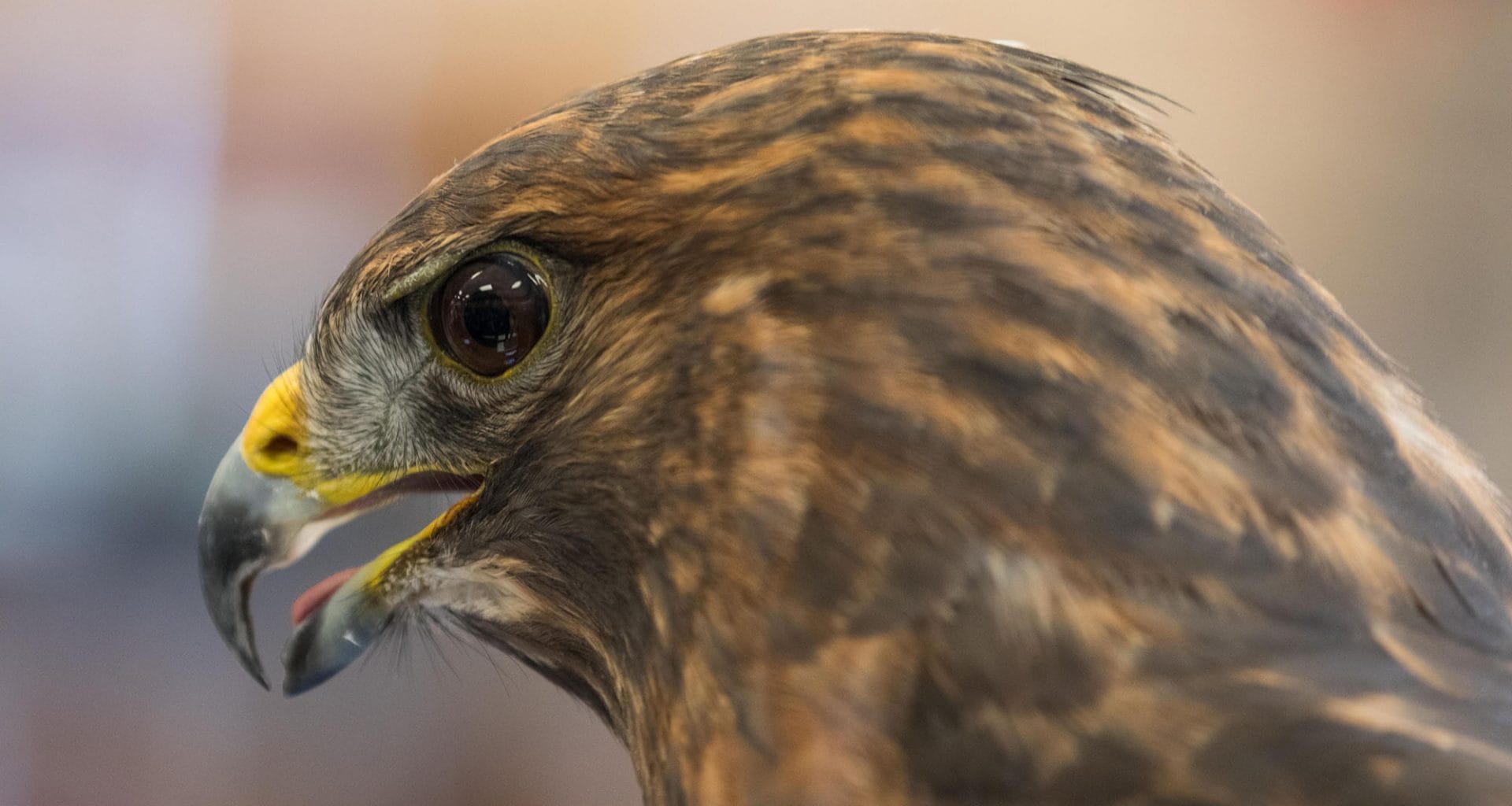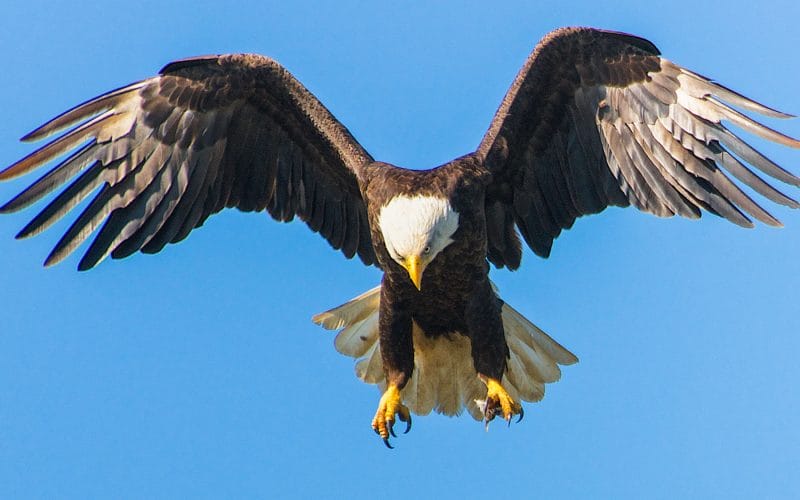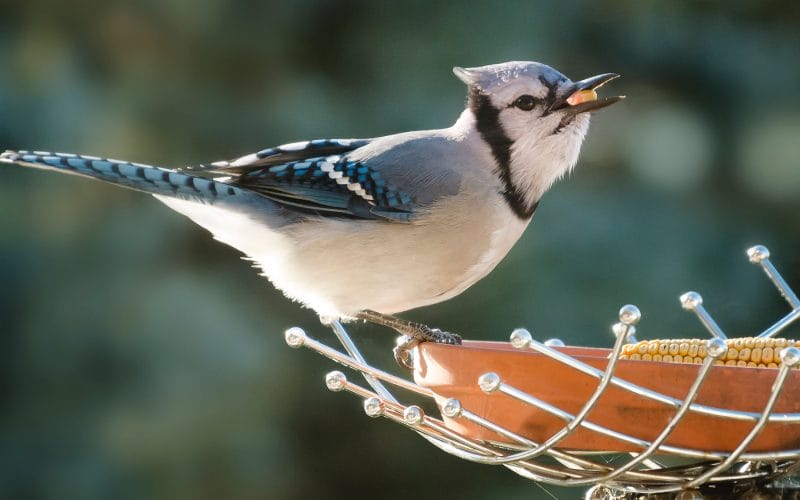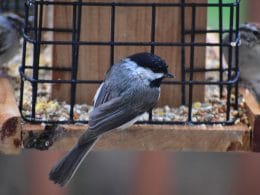There are a number of stages of training a hawk, from ‘imprinting’ with a chick to training a bird to fly from the wrist, all the way to training a deadly hunter, capable of taking prey much larger than its wild relatives. But how much does a trained hawk cost?
A trained hawk can cost upwards of $1,000. Training a hawk to hunt successfully can take a long time which makes successful hunters quite pricey. This is not including shipping and the health certificates that are required in some states.
Untrained birds and chicks are often available to order from breeders. Breeders will often charge a deposit to cover the cost of raising pre-ordered chicks, but even an untrained Harris hawk from an extensive breeding program will cost $800 or even more for a female.
Let’s learn more about how much a trained hawks cost.
The Most Expensive Bird in the World
Compared to the world’s most expensive Saker (Peregrine) falcons sold at Saudi Arabian auctions for hundreds of thousands of dollars. Even the $90,000 for the world’s most expensive racing pigeon, the couple of thousand you might spend on a pair of hawks, could almost be considered pocket change. This is on the high end for how much a trained hawk can cost.
Where to Buy Trained Hawks
There are a few websites that specialize in the sale of raptors in the U.S.A. Still, as shipping can be an additional few hundred bucks (and maybe impossible with COVID restrictions), it is worth trying to find a reputable local breeder.
That being said, these sites are worth watching. On occasion, people will offer up experienced birds much cheaper, sometimes even free to a good home.
What is Falconry?
Yes, we are still dealing with hawks, but hunting with predatory birds is still known as Falconry. Falconry is much more than a hobby or even a sport – it’s a passion. This makes it very easy to glean information from those with experience, and people love talking about their passions.
However, Falconers can be skeptical of those claiming to be interested in joining their ranks, so it’s best to come prepared. Read as much as you can on the subject, prepare some pertinent questions to ask, but most importantly, show your passion.
Author Note: Falconry is not something you just try. If you aren’t willing to invest a few thousand dollars and a few years, don’t even start. Remember you need a sponsor for your first two years as an Apprentice Falconer before being promoted to a General Falconer.
Compared to football or even tennis, Falconry is a pretty small niche, so people honestly displaying a new-found passion will usually receive a fantastic welcome.
Which Hawks are the Best to Train?
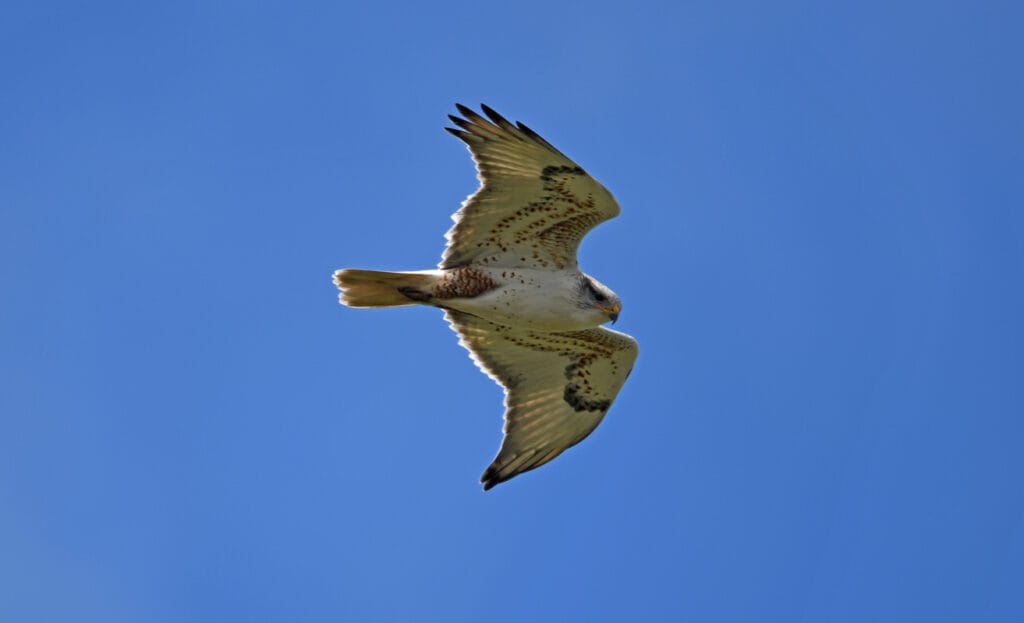
Red-Tailed Hawks
Red-tailed hawks are considered perfect birds for the novice falconer. They are more difficult to find for sale as the apprentice usually releases them. Unlike “a dog is for life, not just for christmas,” a bird can be trained and then released at the end of a season.
Some believe seasonal release is the more ethical route to take, and others build such a strong bond with their bird that the idea of release is just unthinkable.
The Red-tailed Hawk range across most of North America, meaning they can often be encountered in the wild and captured. Training a Red-tailed Hawk to hunt can be comparatively easy, taking as little as ten days for the experienced trainer, though many trainers will take a month or more before free-flying their birds.
Harris Hawks
Harris hawks are some of the most common hawks to train for hunting in the U.S. They usually hunt in pairs or groups called casts. Because Harris hawks are sociable birds, many breeders will not sell a single Harris hawk by itself.
As an apprentice, you are only allowed to keep one raptor for Falconry. Due to the sociable nature of Harris Hawks, state legislation often requires a minimum level of General Falconer to keep Harris Hawks. This ensures that two hawks can be kept together, maintaining their relationship.
This makes your purchase cost even higher, though often a discount is offered on purchases of pairs or larger casts.
Goshawks
Goshawks are also quite popular hawks to train, but if proper care is not taken in their training, they are prone to developing bad habits. Even an experienced trainer must be particularly vigilant with goshawks.
They must be imprinted appropriately at an early age and quickly become a handful, being footy and loud if a strict regimen is not adhered to and maintained.
Falconry Qualifications

Apprentice Falconer
Author Note: As an apprentice falconer, you are allowed to keep only a single raptor for Falconry, and this bird must not be imprinted on a human. Imprinted birds are generally much easier to handle as they have identified with humans as their parents from hatching.
Imprints are not allowed to be kept by apprentices because apprentices must learn how to safely and p capture, handle, care for, and train a wild bird. Wild birds learn wild habits from their parents. An apprentice trainer must recognize these habits, reinforcing good behaviors, and mitigating undesirable habits.
As an apprentice, you can also take a wild bird (not a hatchling) that is up to one year old. Alternatively, you can have ownership of a bird transferred to you by another Falconer permittee.
General Falconer
Once you have achieved the General Falconer level, you can keep up to 3 Falconry birds, and depending on state regulations. You may also be allowed to keep more different species than an apprentice.
As a General Falconer trained in the care of wild birds, you can now keep imprinted birds too. Whether you choose to purchase an imprinted bird or breed a chick to train and imprint yourself, imprinted birds are part of your family rather than part of a flock.
Master Falconer
Achieving the level of Master Falconer requires that you practice Falconry with your own birds for a period of 5 years or more, at the General Falconer level. Being a Master Falconer allows you to keep up to 5 Falconry birds.
As long as you meet the qualifications, you may even capture and keep some protected species such as Golden Eagle, White-Tailed Eagle, and Steller’s Sea Eagle.
Migratory Bird Treaty Act
The migratory birds’ act dictates the regulations for keeping Native migratory bird species captive in the U.S.A. Your Falconer level determines the species and number of raptors you are allowed to keep for Falconry.
Be aware that there are different state laws to Falconry, and different proficiency levels a falconer can attain. In some states, one must achieve Master Falconer or General Falconer’s level before receiving the license to keep Harris hawks; some states, however, allow apprentice falconers to start with captive-bred Harris hawks.
All crossbred hawks and falcons must either be human imprinted or sterilized.
Housing Your Hawks
A house for raptors is referred to as a mews in falconry circles. To build your mews can cost the same as one of your hawks or even much more depending on how big and fancy you’d like your mews to be. Building a shelter contributes to how much a trained hawk cost.
There are several factors to consider before you begin the construction of your mews. Firstly, what type of climate do you live in? Will your bird overheat in summer or freeze in winter? Even if you don’t live in an extreme climate, the temperature is a key factor in keeping your birds comfortable and healthy.
Avoid facing the mews’ windows to the South or West, and East is great to allow the birds to watch the sunrise. South-facing windows will catch too much sun making the mews uncomfortably warm. Even west-facing windows, to watch the sunset can introduce an unwelcome amount of heat.
It is recommended that a mews is placed in a shady area, ideally beneath a tree. Too much direct sun can turn the mews into an oven.
Training Hawks
Flying hawks and hunting with raptors provides an exhilaration that is second to none. But there is nothing more satisfying than watching a bird you have trained since it was a downy little hatchling take prey for the first time.
Hawks generally take prey that they can fly away with. This significantly reduces the number of kills that birds in the wild will lose to scavengers. Ideally, we want to train our birds to take prey larger than it would naturally hunt. To do this, great pains must be taken to bolster the confidence of a hawk.
A trainer must consistently reward young birds that have made a kill. The best way to do this is to allow the hawk to eat its fill of the prey without interruptions. When upgrading a young hawk to hunt for larger prey, using feeder rabbits really helps. Be careful to reenact the entire hunting experience while training.
Properly Training a Young Hawk
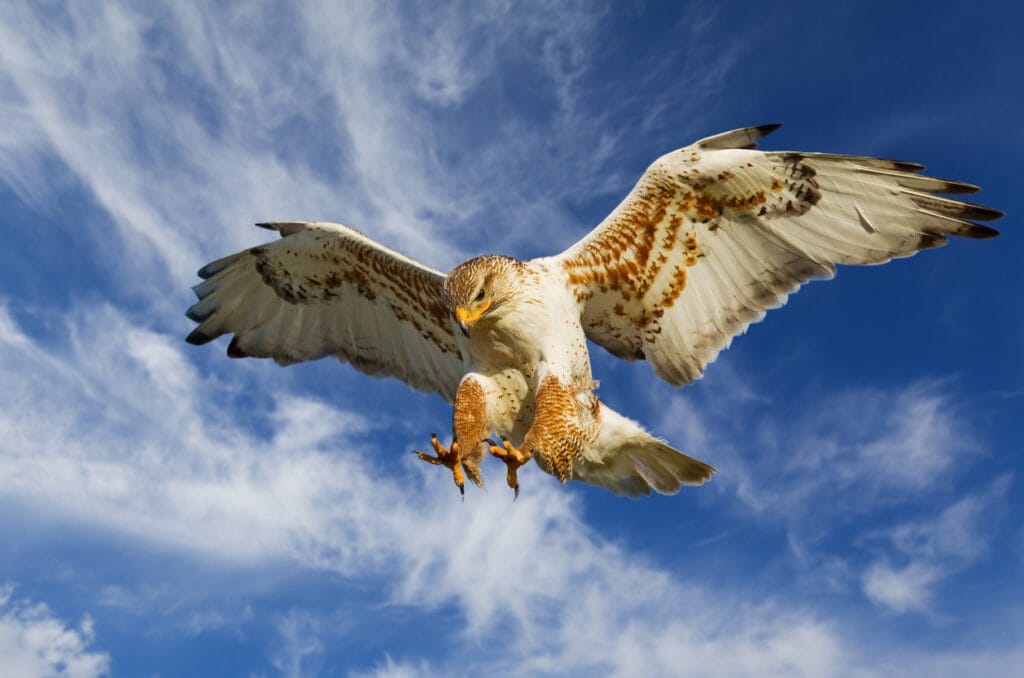
Young birds must be familiar with people beating the brush and learn to watch the areas around beaters for startled prey. It is best to take a few minutes to clear out the game from the brush in the immediate area before you begin training with feeder rabbits; you don’t want live prey confusing the training program.
Author Note: Have one of your brush beaters keep the feeder rabbit with them while you are manning the bird. When you are ready, play out the “Ho, Ho, Ho” response to the brush beater startling a rabbit while making your game call to initiate the hunt.
Young birds will often veer off at the last moment when approaching prey larger than they are used to; even a dead feeder rabbit can make a young bird wary. If you feed your bird by hand, you may need a knife to cut a few morsels from the rabbit to help the bird understand that the carcass contains more tasty meat.
Feeding Young Hawks
Hares can deliver a powerful kick to unwary hunters. If a young bird is on the receiving end of such a strike, it may provide a real blow to the development of the bird’s training or even lead to a severe injury. You don’t want your bird to go after larger live prey before it is ready.
Remember that there is more meat for the bird with larger prey to eat, and hawks are greedy. Ensure that the hawk does not overeat. Food starting to rot while still in the bird’s crop is a real problem and can even be life-threatening.
Inversely, take the kill away from the bird too early, and it may feel robbed of its fair portion of the spoils it worked so hard for. A Falconer must maintain a balance; the bird must be constantly reassured that it is beneficial to be in partnership with the Falconer. This is especially important with non-imprinted birds.
Feeding your hawk properly contributes significantly to how much does a trained hawk cost.
Conclusion
We hope you enjoyed learning how much does a trained hawk cost. If you want to learn more about hawks, check out our article on why hawks like living in your yard.
Fly high friends!




